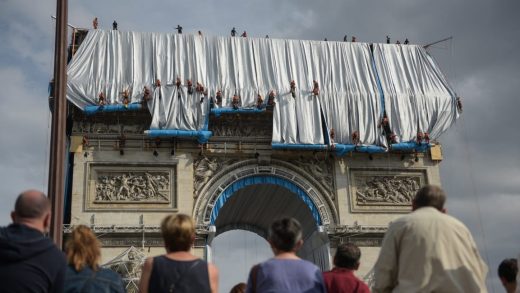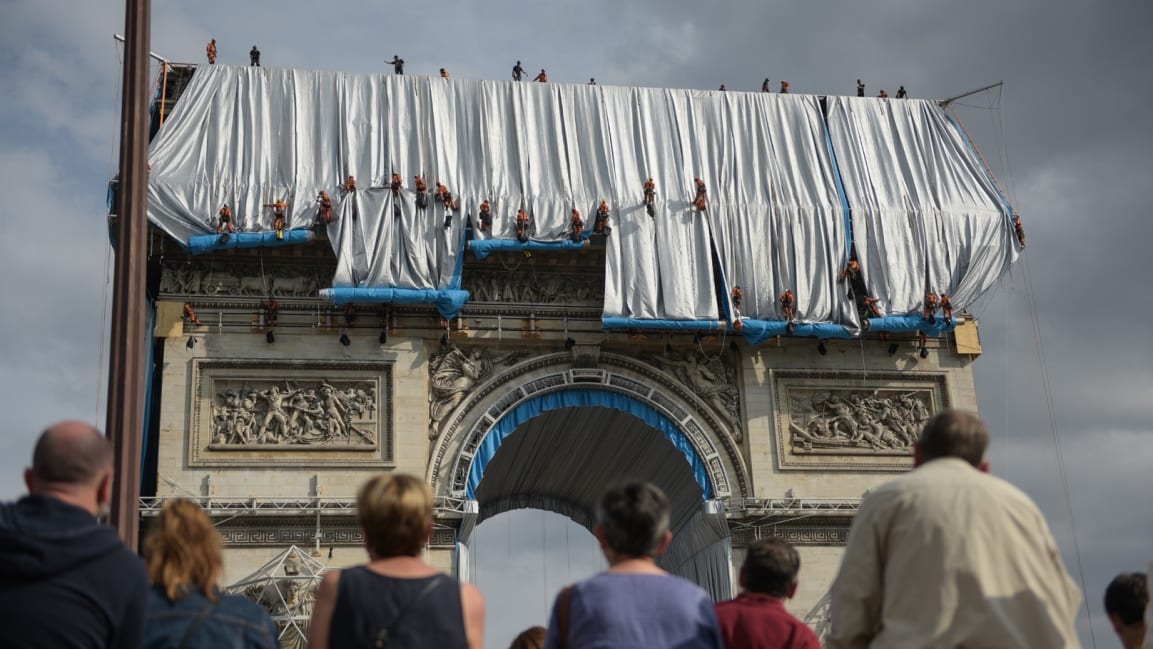The phenomenal story of how Christo wrapped the Arc de Triomphe in 270,000 square feet of fabric
Perched in the basket of a cherry picker, Vladimir Yavachev is arm’s length from the vaulted ceiling inside the Arc de Triomphe, nearly a hundred feet above the streets of Paris. “We had to fix something up here,” he says, hard-hatted and yelling through the wind on a video call, with the tree-lined Champs-Élysées stretching out in the background below. He’s up at this great height inside one of the world’s most famous monuments straightening the folds on a massive piece of silvery blue fabric.
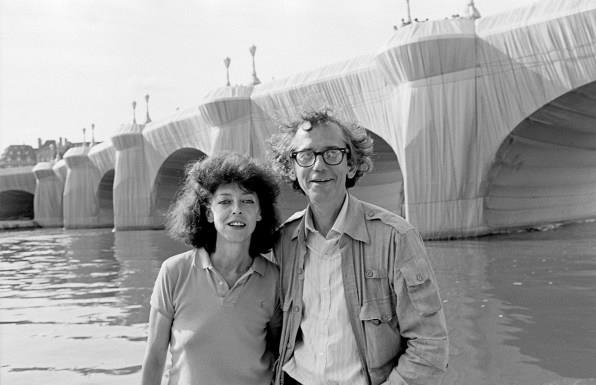
[Photo: Wolfgang Volz/© 1985 Christo and Jeanne-Claude Foundation]
“If Christo was around, he wouldn’t be happy if they weren’t straight,” says Yavachev, the nephew and project manager for the late artist Christo, who, with his longtime partner Jeanne-Claude, devised this project, wrapping the Arc de Triomphe in hundreds of thousands of square feet of recyclable polypropylene fabric, held in place by 9,800 feet of red rope. It’s a monumental artwork, and a massive logistical challenge.
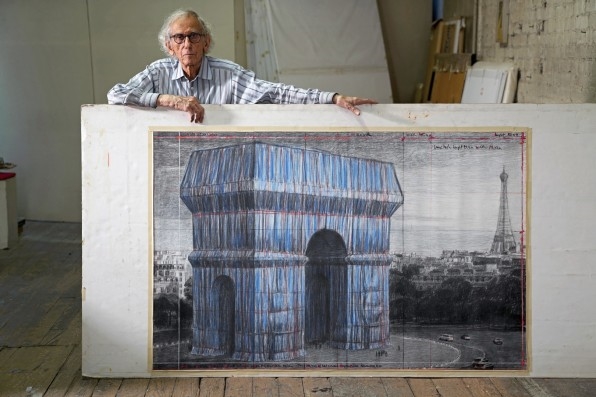
New York City, September 20, 2019.
[Photo: Wolfgang Volz/© 2019 Christo and Jeanne-Claude Foundation]
Arc de Triomphe, Wrapped is the latest, and one of the final, planned works of Christo and Jeanne-Claude, a pair of artists whose large-scale environmental artworks include the installation of more than 7,500 vinyl and wooden gates throughout New York’s Central Park (The Gates) in 2005; 24 miles of fabric fences running through the foothills of coastal California (Running Fence) in 1976; and, most recently, an iceberg-like mountain of oil drums floated on Serpentine Lake in London’s Hyde Park (The London Mastaba) in 2018.
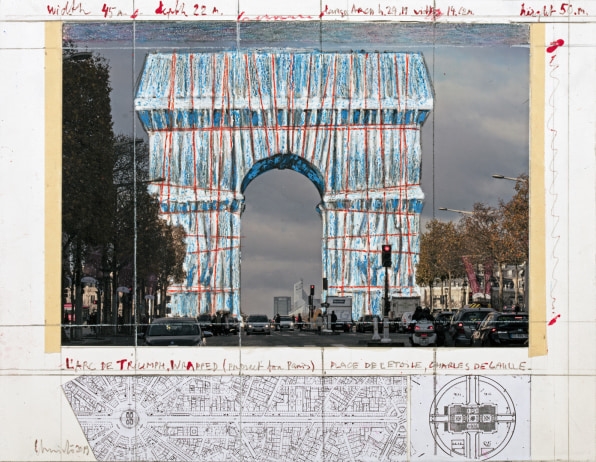
Collage 2019.
[Photo: André Grossmann/© 2019 Christo and Jeanne-Claude Foundation]
The Paris project is a continuation of Christo and Jeanne-Claude’s other fabric-wrapping projects, including 1995’s covering of the German Reichstag building (Wrapped Reichstag) in newly reunified Berlin and the 1985 covering of the Pont Neuf bridge (The Pont Neuf Wrapped) in Paris. Originally sketched in 1961 but not officially proposed until 2017, eight years after the death of Jeanne-Claude and three years before the death of Christo, the wrapping of the Arc de Triomphe is one of the last three projects initiated by the artists.
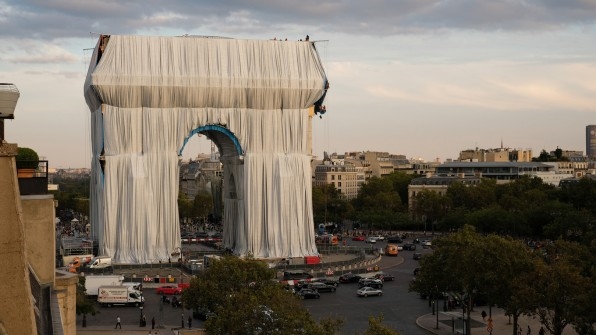
[Photo: Matthias Koddenberg/© 2021 Christo and Jeanne-Claude Foundation]
Leading up to its 16-day run, which begins on Saturday, wrapping the Arc de Triomphe has involved years of engineering, bureaucratic wrangling, sewing, and rope climbing. Despite what might seem a simple draping of fabric, wrapping the building requires hundreds of tons of steel bracing and ropes, detailed wind modeling, and no shortage of specially designed protective structures to hold the fabric down while protecting the Arc beneath. Installation work has been in progress since mid-July.
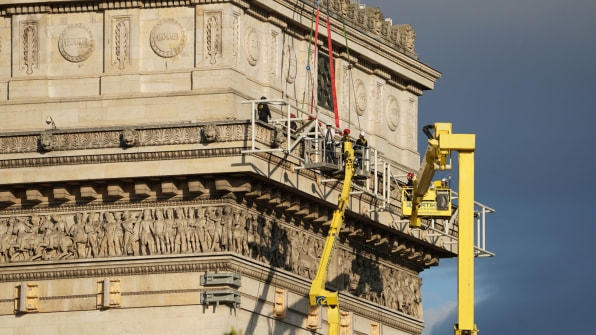
[Photo: Wolfgang Volz/© 2021 Christo and Jeanne-Claude Foundation]
“It’s not just a national monument, it’s the national monument. So there’s a lot of sensitivities and a lot of care that has to be taken around it,” Yavachev says.
To pull off such a feat, Christo’s team has engaged a wide range of consultants and partners, including civil and structural engineers, industrial fabric makers, and industrial climbers on a project that required governmental approvals going all the way up to President Emmanuel Macron.
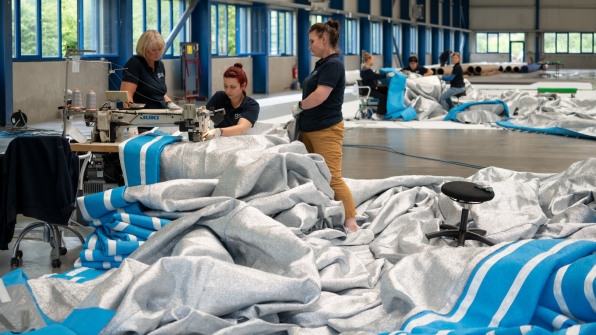
Anne Burghartz is an engineer with Schlaich Bergermann partner, a German engineering consultancy that has worked on several projects for Christo and Jeanne-Claude over the past decade. Burghartz has been in charge of figuring out how to build a framework and system to hold the fabric without damaging the monument.
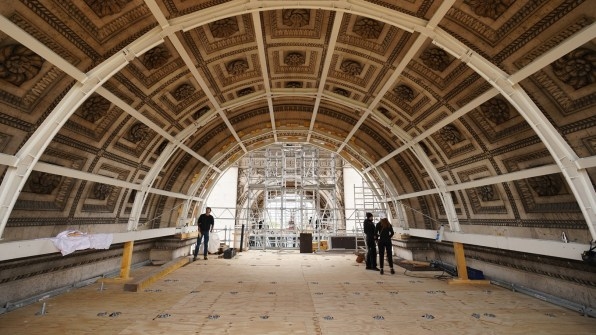
[Photo: Wolfgang Volz/© 2021 Christo and Jeanne-Claude Foundation]
“The first task was to make the wrapping look like Christo wanted,” Burghartz says. She says Christo had given her very specific instructions on how the wrapping should follow the general contours of the building, but to also abstract its details and cornices. “He said I want a two-meter vertical line here, a one-meter vertical line here,” she says.
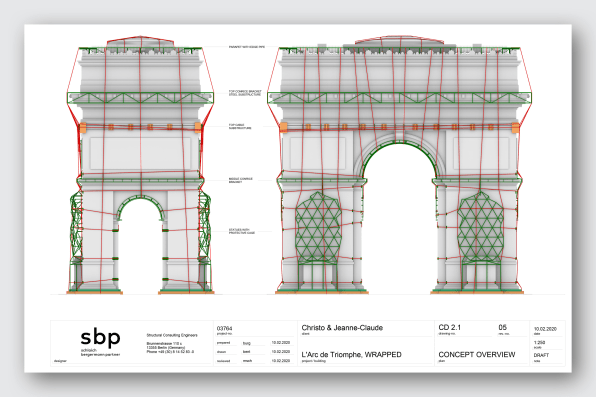
She and her team developed a detailed plan so the wrapping would meet Christo’s desired shapes. It involves a large steel framework laid on the flat top of the Arc and cantilevering over its edges, a series of pre-stressed steel cable belts wrapped around the facades and legs of the Arc, and more than 100 tons of steel weights at the top and bottom to anchor the weight of the fabric. To reduce the impact on the monument, most of the support system is secured using counterweights, with wooden buffers in between steel and the building itself.
“Together with the
[National Monuments]
Authority, we defined places where we could touch the facade, not touch the facade, where we could fix structures, and where we would have to make protective structures,” she says.
One of the big challenges was protecting the four large sculptures that adorn the base of the Arc. “Some of the them have swords, some of them have wings or trumpets,” she says. “There are lots of things that point out, and you have to find a way to protect them.”
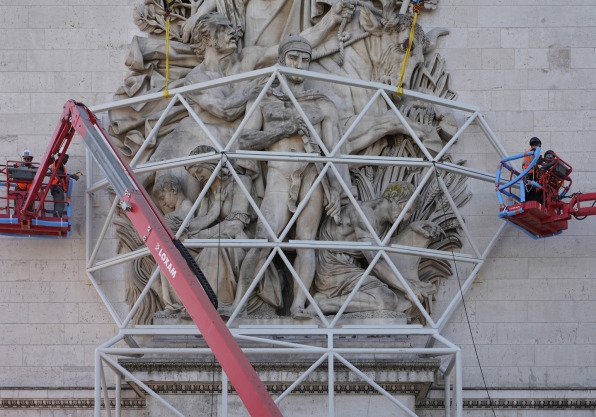
[Photo: Wolfgang Volz/© 2021 Christo and Jeanne-Claude Foundation]
Her team developed a triangle-based cage system that could encase the sculptures without obstructing the flowing folds of the fabric draped over them. The four cages weigh 10 tons each, and are more than 60 feet tall. Securing them in place required drilling into the Arc, which everyone wanted to keep to an absolute minimum. Reducing the amount of holes became an engineering challenge.
Yavachev wanted no more than 8 holes drilled for each of the 4 sculpture cages, or 16 holes per side of the building. “They said it was impossible. It was back and forth,” Yavachev says. “And at the end I said, ‘Imagine you’re working for NASA and you can only do 16 [per building side], so figure it out.’ And they did.”
“When people hear we drilled eight holes per cage they’re a bit freaked out,” Burghartz says. “But for us, we were super proud of this because it involved a lot of optimization.”
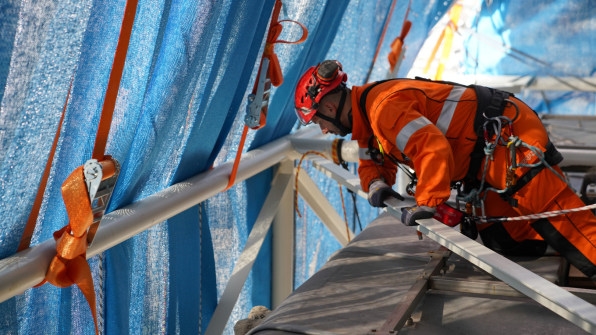
[Photo: Wolfgang Volz/© 2021 Christo and Jeanne-Claude Foundation]
Securing the fabric itself was another challenge, involving detailed wind modeling to accommodate the high forces of wind coming down the avenues that lead to the Arc. Though the 270,000 square feet of recyclable polypropylene fabric used for the wrapping has many perforations, it nonetheless acts like a sail in the wind, putting excessive forces on the substructure. In total, nearly 150 tons of steel were required to create the framework to hold it in place.
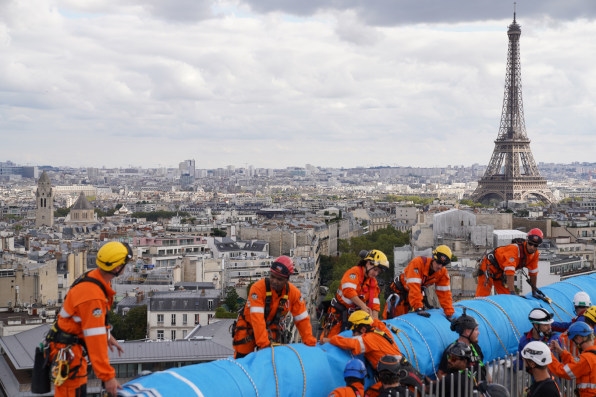
[Photo: Wolfgang Volz/© 2021 Christo and Jeanne-Claude Foundation]
And in order to ensure the final installation aligned with the artists’ vision, the fabric could only be secured to the structure in specific ways, where the red ropes crisscross the building. “Christo said for it to look natural, you can only anchor the fabric where you have red rope crossing, so it looks like a cushion,” Burghartz says “If you anchor the fabric somewhere else, it would not look natural, you would have the wind dragging, and suddenly you would see that there’s an attachment.”
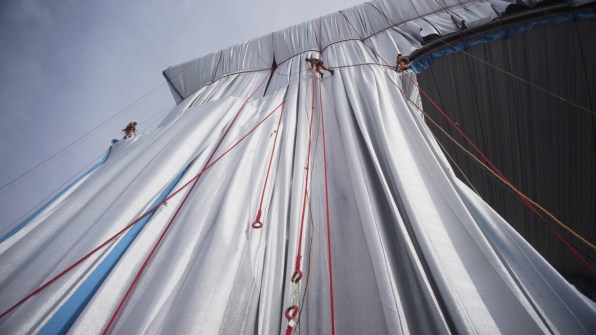
[Photo: © 2021 Christo and Jeanne-Claude Foundation]
Yavachev says the viewer experience was always Christo’s priority. “He wouldn’t be up on the cherry picker,” Yavachev says. “He’d say nobody’s going to see it from the cherry picker. You have to see it like they’ll see it from the ground.”
That’s why it was important that Yavachev and his team took care of another challenge for the project: closing the massive street that rings the Arc de Triomphe. After many months of wrangling with officials, they managed to get permission to close the roundabout to car traffic for the three weekends the Arc will be wrapped, ensuring pedestrians will be able to visit the site and see it from up close and far away. The $16.5 million installation was funded through sales of Christo’s work, and has no admission fee to visit from the exterior, but access inside the Arc, and to its roof terrace, require paid reservations.
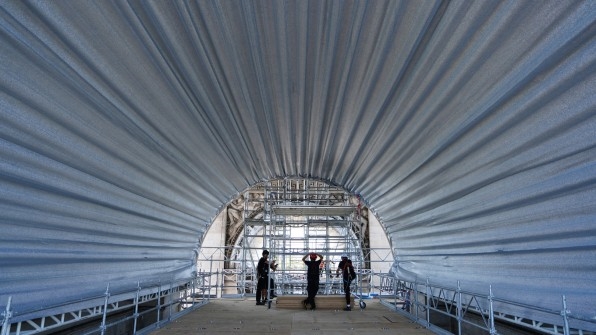
[Photo: Wolfgang Volz/© 2021 Christo and Jeanne-Claude Foundation]
Yavachev says the four years leading up to the project’s opening this weekend have been full of complications and challenges, but that the team of consultants and creative people involved have made it come to life as close as possible to Christo’s original vision way back in 1961.
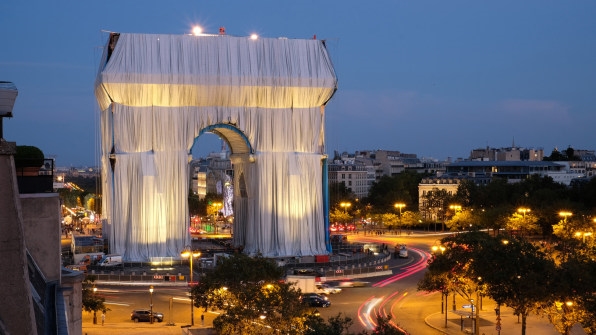
[Photo: Matthias Koddenberg/© 2021 Christo and Jeanne-Claude Foundation]
“For me the most difficult thing about this project is that Christo’s not here. We definitely miss his energy, his enthusiasm, his criticism, everything,” he says. “The most missed is how excited he would be. Because he would get excited like a child, especially at this stage when it’s just coming together.”
(30)

